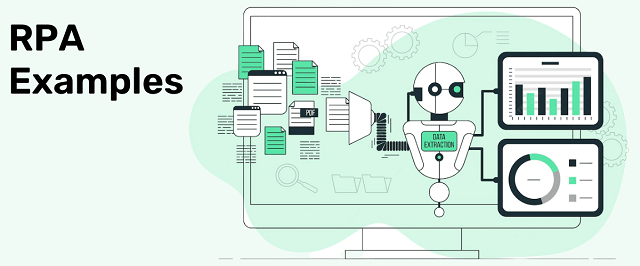Robotic process automation (RPA) automates repetitive and heuristic business functionalities. Rpa tools can be used to set up connections between digital systems, capture and retrieve data, transaction processing and so on. It also diminishes expenditure and checks manual errors. In the coming time, RPA is set to coalesce with AI and machine learning.
What Is RPA?
Robotic process automation is a technology that allows workers to automate repetitive tasks. This can include tasks like data entry, form filling, and other simple, time-consuming tasks. RPA is designed to help businesses improve efficiency and productivity by freeing up employees from these types of tasks so they can focus on more complex work.
Key RPA Benefits
There are many benefits of implementing robotic process automation in the workplace. One of the most obvious benefits is increased efficiency. When employees are no longer bogged down by monotonous tasks, they can work on more challenging projects that require their skills and attention.
This can lead to better overall results for the company. In addition, RPA can also help to improve accuracy and consistency in task completion. By automating these processes, businesses can avoid human error and ensure that tasks are completed correctly every time.
Another benefit of using RPA is improved compliance with regulations and standards. When businesses automate their processes, they can be sure that all steps are followed correctly in order to meet any necessary requirements.
This helps to reduce the risk of non-compliance penalties or fines. Additionally, automated processes can also help businesses keep better track of their data and analytics related to specific projects or goals.
This information can be used to make informed decisions about future actions or strategies.
Overall, there are many advantages to implementing robotic process automation technology in the workplace. Businesses who adopt this technology often see increases in efficiency, productivity, accuracy, and compliance rates.
Also, RPA can be a valuable tool for streamlining business operations and improving bottom-line results.
Examples and Use Cases of Robotic Process Automation
Here are some of the important RPA uses cases for different industry types.
1. Call center operations
RPA technology can help solve queries and requests of the customers by exploiting the dashboard facility where the agents handling the customers can receive snaz
probable solutions automatically. Rpa is able to consolidate all of the customer information stored in multiple systems on a single screen which allows agents to perform well and solve the issue raised by the customer quickly.
2. Claims administration
RPA automates the insurance and healthcare provisions when it comes to input and processing of Claims. If done manually, chances of error increase which is not the case with RPA tools. Besides fast inputs with less errors RPA tends to save you from making unwarranted payments by identifying anomalies that don’t follow.
3. Maintaining Record of Employees
The automated services of rpa help to ensure that every employee is on deck according to the fixed company policies. It also makes certain that they have received the company guidelines and all related information for smooth functioning of the company and compilation with the rules.
4. Help desk
RPA can be called a human-friendly tool. It has the ability to handle straightforward and repetitive issues that come to the help desk. This reduces the intensive human labor involved in this process. Additionally, it helps the IT staff to save time and stay ahead of the issues with RPA bots performing the regular diagnostics of the systems.
5. Support the sales process
RPA controls most of the administrative work with its automated service provisions including Customer Relationship Management (CRM) updating, bills management, input of sales data and sales monitoring system management. This ensures that the time supposed to be spent on sales and relationship building is used at the correct place.
6. Credit card applications
Credit card application processing involves collecting information, documentation, credit and background checks, taking the final decision of allocating a credit card to the worthy applicant and ultimately, issuing of the credit card. RPA can be easily programmed to perform these functions efficiently.
7. Expense management
Expense management involves insertion of expense reports details such as business name, data and amounts which is cumbersome work to do manually. Nowadays, it is effortlessly done using RPA tools as they can automatically draw information from the receipt once uploaded to the system.
8. Pulling data from multiple websites to find the best deal
For travel planning, buying a vehicle or shopping online, RPA tech provides a perfect one place solution to the hectic task of finding the best deals. It collects, compares and then presents the best ongoing deals for you.
Rpa tech is designed to add convenience and comfort to human lives and the working process. It helps companies to perform a wide variety of tasks quickly and efficiently. It has huge potential and scope for the future. With the examples listed above we intend to show how RPA is used in real businesses.
Final Words
Robotic process automation is one of the most important tools that businesses can use to streamline their operations and improve their efficiency. By automating repetitive tasks, businesses can free up their employees to focus on more important work, and can improve the accuracy and quality of their work.
Additionally, robotic process automation can help businesses to save money by reducing the need for human labor.



